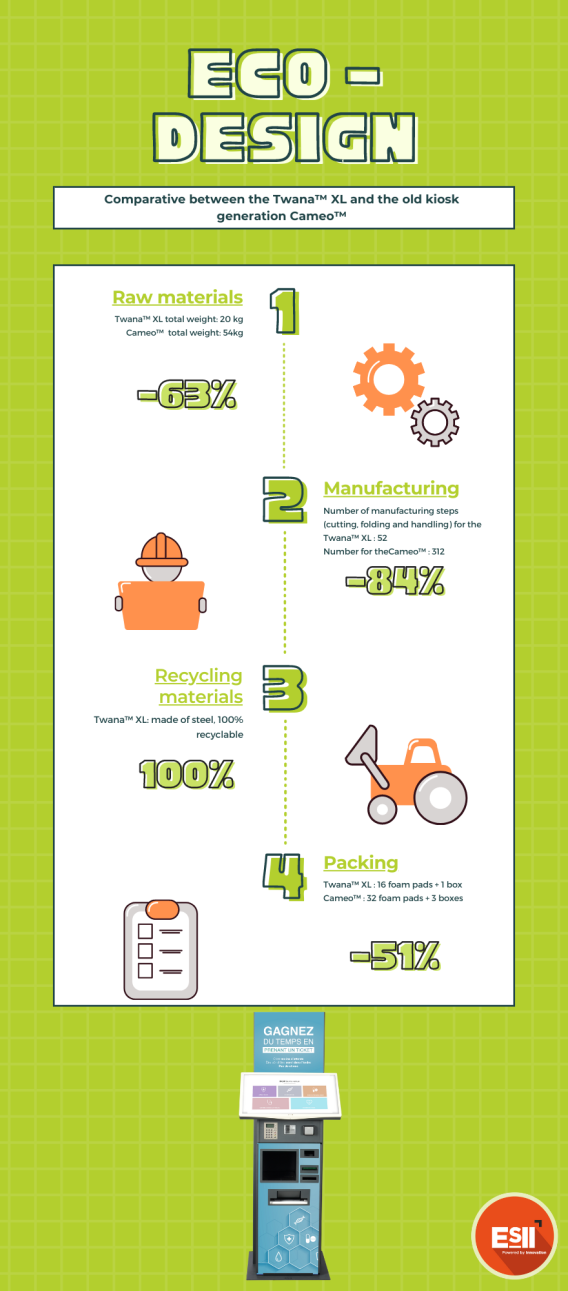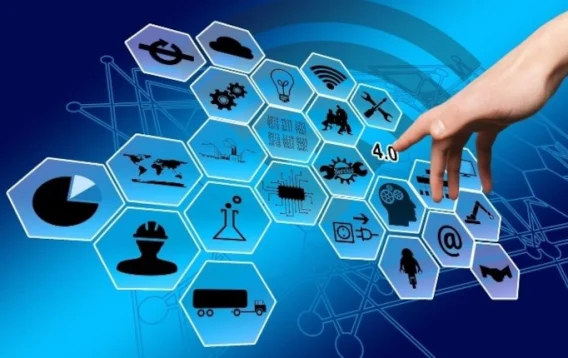ESII staff is committed to CSR on a daily basis in order to change their habits and move towards a more ecological organization with the sustainable development concept. All actors, from the value chain to support activities, are mobilized in this action. To agree with this assertion, today we will study the specific case of a new product creation, the Twana ™ XL kiosk, and how the concern for CSR impacted it.
At the origin of the project, we find the need to renew our interactive terminals range (Cameo ™) to adapt it to new needs and new market technologies. Beyond these requirements, we also wanted to apply the logic of eco-design in the product development. To do this, we needed to integrate environmental protection from the start of this process to ensure that the kiosk ecological impact was limited throughout its life cycle.
What is eco-design?
Eco-design is defined as the manufacture improvement of a product at each stage, from an ecological point of view. Thus, we can have 6 main areas of action when creating a product:
- Raw materials: choice of materials, their origin …
- Manufacturing: waste of resources, optimization of processes, reduction of the necessary energy and transport …
- Distribution: better logistics, packaging, reduction in weight and volume …
- Sale: ease of installation, location, necessary POS advertisement …
- Use: lifespan, repairability, robustness …
- End of life: recycling of elements, valuation of components, etc.
Eco-design for the Twana™ XL
To come back to the Twana™ XL multifunction kiosk, we are going to compare with the old Cameo ™ generation:
- Raw material: the Twana ™ XL, with its extension, weighs 20 kg compared to the 54 kg of the old one, i.e. a reduction of 63%.
- Manufacturing: to manufacture a Twana™ XL it takes 52 steps including cutting, folding and handling. When we compare the figures to the 312 steps of the Cameo ™ terminal, we see a decrease of 84%
- Distribution: the packaging of a Twana™ XL requires 17 elements, i.e. 16 foam pads and a box. It has 18 fewer elements than the older generation.
- End of life: the kiosk is 100% recyclable because it is made of steel compared to 80% for the Cameo™.
Articles reliés
-

- News
- ESII
The importance of satisfaction survey
-

- News
- CSR
The work environment at ESII
-

- News
- ESII
The future is POE






